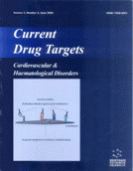Abstract
Striated (skeletal and cardiac) muscle is activated by the binding of Ca2+ to troponin C and is regulated by the thin filament proteins, tropomyosin and troponin. Unlike in molluscan or smooth muscles, the myosin regulatory light chains (RLC) of striated muscles do not play a major regulatory role and their function is still not well understood. The N-terminal domain of RLC contains a Ca2+-Mg2+-binding site and, analogous to that of smooth muscle myosin, also contains a phosphorylation site. During muscle contraction, the increase in Ca2+ concentration activates the Ca2+ / calmodulin-dependent myosin light chain kinase and leads to phosphorylation of the RLC. In agreement with other laboratories we have demonstrated that phosphorylation and Ca2+ binding to the RLC play an important modulatory role in striated muscle contraction. Furthermore, the ventricular isoform of human cardiac RLC has been shown to be one of the sarcomeric proteins associated with familial hypertrophic cardiomyopathy (FHC), an autosomal dominant disease characterized by left ventricular hypertrophy, myofibrillar disarray and sudden cardiac death. Our recent studies have demonstrated that phosphorylation and Ca2+ binding to human ventricular RLC are significantly altered by the FHC mutations and that their detrimental effects depend upon the specific position of the missense mutation, whether located in the proximity of the RLC Ca2+-Mg2+-binding site or the phosphorylation site (Serine 15). We have also shown that there is a functional coupling between Ca2+ and / or Mg2+ binding to the RLC and phosphorylation and that the FHC mutations can affect this relationship. Further in vivo studies are necessary to investigate the mechanisms involved in the pathogenesis of RLC-linked FHC.
Keywords: regulatory light chains of myosin (rlc), Phosphorylation, skinned fibers, familial hypertrophic, cardiomyopathy (fhc) mutations.
 22
22













